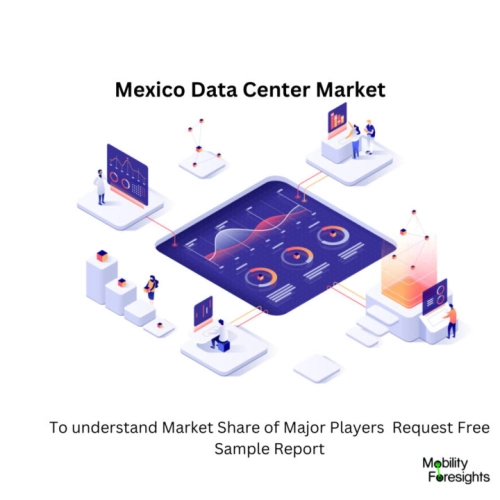
- Get in Touch with Us

Last Updated: Apr 25, 2025 | Study Period: 2024-2030
Mexico's data center industry has expanded significantly, and it is essential to the nation's changing digital environment. The strategic position of Mexico, its excellent communication system, and the rising demand for digital services have all facilitated the growth of data centers in the area.
First and foremost, data centers provide the essential infrastructure for cloud computing, data processing, and storage for companies, the government, and service providers. They are the foundation of the digital economy. Mexico is a desirable location for multinational corporations wishing to establish a presence in the area due to its proximity to the United States. This proximity also makes it easier to establish low-latency connections to North American markets, which raises Mexico's value as a hub for data centers.
The need for data center services has been fueled by the growing uptake of cloud computing, IoT (Internet of Things), and Big Data analytics. The quick digital transformation of several industries, including finance,e-commerce, healthcare, and manufacturing, further accelerates this expansion. Data centers are essential for satisfying businesses' computing and storage needs as they seek to harness the power of data for innovation and competitiveness.
The Mexican government has also taken steps to encourage the growth of the digital infrastructure industry and acknowledged the significance of data centers. These initiatives are intended to increase investments, employment, and the nation's standing in the global digital economy. The development of Mexico's technology is dynamically dependent on the data center sector. It promotes connection, technical advancement, and economic progress, making Mexico a prominent player in the local and international data center market. Mexico's data center sector is positioned to become more and more crucial to the country's growth and prosperity as digitization continues to influence the modern world.

The Mexico Data Center Market accounted for $XX Billion in 2022 and is anticipated to reach $XX Billion by 2030, registering a CAGR of XX% from 2024 to 2030.
A new campus is being built outside of Mexico City by the Latin American business Scala Data Centers. The business, which is owned by DigitalBridge, disclosed plans to build SMEXTP01, its first data center in the nation. The project, which is situated in Tepotzotlán, will have a 5MW initial critical capacity. The 'big hyperscale client' is already anchored by Scala's new site, which is scheduled to be live in Q4 of this year.
This new initiative highlights Scala's dedication to opening up new markets in Latin America, whether in uncharted territory or in areas where data centers are already but where substantial IT capacities are still lacking that actually cater to the hyperscale category. With its leadership in this expansion and its commitment to innovation, energy efficiency, and sustainable technology, Scala is happy to offer its vast colocation clients in the area exceptional conditions.
| Sl no | Topic |
| 1 | Market Segmentation |
| 2 | Scope of the report |
| 3 | Abbreviations |
| 4 | Research Methodology |
| 5 | Executive Summary |
| 6 | Introduction |
| 7 | Insights from Industry stakeholders |
| 8 | Cost breakdown of Product by sub-components and average profit margin |
| 9 | Disruptive innovation in the Industry |
| 10 | Technology trends in the Industry |
| 11 | Consumer trends in the industry |
| 12 | Recent Production Milestones |
| 13 | Component Manufacturing in US, EU and China |
| 14 | COVID-19 impact on overall market |
| 15 | COVID-19 impact on Production of components |
| 16 | COVID-19 impact on Point of sale |
| 17 | Market Segmentation, Dynamics and Forecast by Geography, 2024-2030 |
| 18 | Market Segmentation, Dynamics and Forecast by Product Type, 2024-2030 |
| 19 | Market Segmentation, Dynamics and Forecast by Application, 2024-2030 |
| 20 | Market Segmentation, Dynamics and Forecast by End use, 2024-2030 |
| 21 | Product installation rate by OEM, 2023 |
| 22 | Incline/Decline in Average B-2-B selling price in past 5 years |
| 23 | Competition from substitute products |
| 24 | Gross margin and average profitability of suppliers |
| 25 | New product development in past 12 months |
| 26 | M&A in past 12 months |
| 27 | Growth strategy of leading players |
| 28 | Market share of vendors, 2023 |
| 29 | Company Profiles |
| 30 | Unmet needs and opportunity for new suppliers |
| 31 | Conclusion |
| 32 | Appendix |